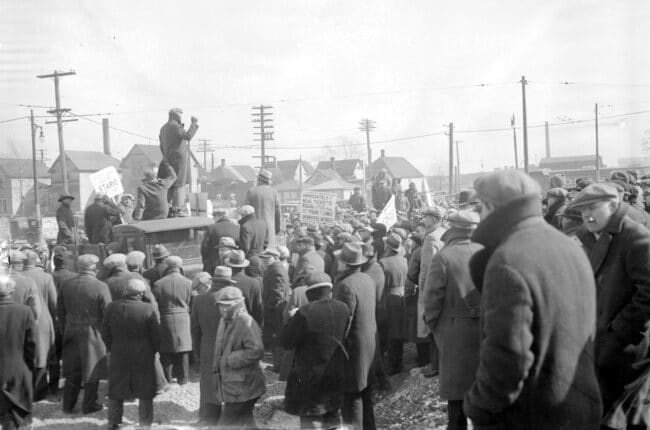
Demonstrators fill the streets en route to the Ford Motor Company River Rouge Plant during the Ford Hunger March. Credit: Walter P. Reuther Library
On March 7, 1932, the Young Communist League and the Detroit Unemployed Council organized a hunger march in Dearborn (Detroit), Michigan to present a series of demands to Ford Motor Company. Their demands included jobs, wages, end to foreclosures, and health care.
The marchers were met by 50 police officers and Ford’s private security men who used tear gas, water cannons, and guns on the protestors. Five workers were killed and 60 were injured.
Stella Brown, a member of the Detroit Unemployed Organized Council, remembers the march as follows: “people start running like crazy, and I didn’t know what was happening but I know one thing, that the tear gas, I didn’t know even, I didn’t even realize they were shooting.”
Hundreds of workers were fired for their participation — or suspected participation — in the march. The organized workers were vilified in the mainstream press as Communists.
According to one case study by the Global Nonviolent Action Database is a project of Swarthmore College,
Upon entering Dearborn, however, the protesters encountered city police. The Dearborn police launched tear gas against the marchers, some of whom began throwing stones and dirt clods at the police in response. The police temporarily retreated, and the marchers continued toward the Ford factory. When they arrived at the factory, Dearborn police, the Dearborn fire department, Detroit police, Michigan state police, and Ford Motor Company’s private security force blocked the marchers from proceeding further. The Fire Department attacked the protesters with cold water from their fire hoses, and the protesters continued to throw stones. The police and Ford security began to shoot at the crowds of marchers, killing four marchers and injuring over sixty more. Goetz and the other leaders called off the demonstration and police arrested almost fifty marchers.
The Ford Hunger March also became known as the Ford Massacre and sparked an outcry against the police brutality of unemployed protesters. On 12 March 1932, around 60,000 people came together for a funeral procession for the four dead marchers, all four of whom were members of the Young Communist League. The procession marched through Woodward Avenue in Detroit to the Woodmere Cemetery. At the gravesite, the demonstrators sang “L’Internationale,” the socialist anthem.
The Ford Motor Company continued to repress workers. The company fired employees for possessing socialist literature. The march did not immediately lead to changes in the Company’s policies but did inspire other movements of workers and unions to voice their demands. Read more.
Watch the video below to learn more about the experiences of marchers Anna Kruchen, Jerry Gawura, and Stella Brown.
This story was prepared by Emma Haseley.
Additional Resources
Remembering the 1932 Ford Hunger March: Detroit Park Honors Labor and Environmental History by Paul Draus (The Conversation)
What was the 1932 Ford Hunger March? by Annamarie Sysling (on CuriosiD, a podcast on Detroit’s NPR, WDET)
Learn more in the articles in Swarthmore’s Global Nonviolent Action Database


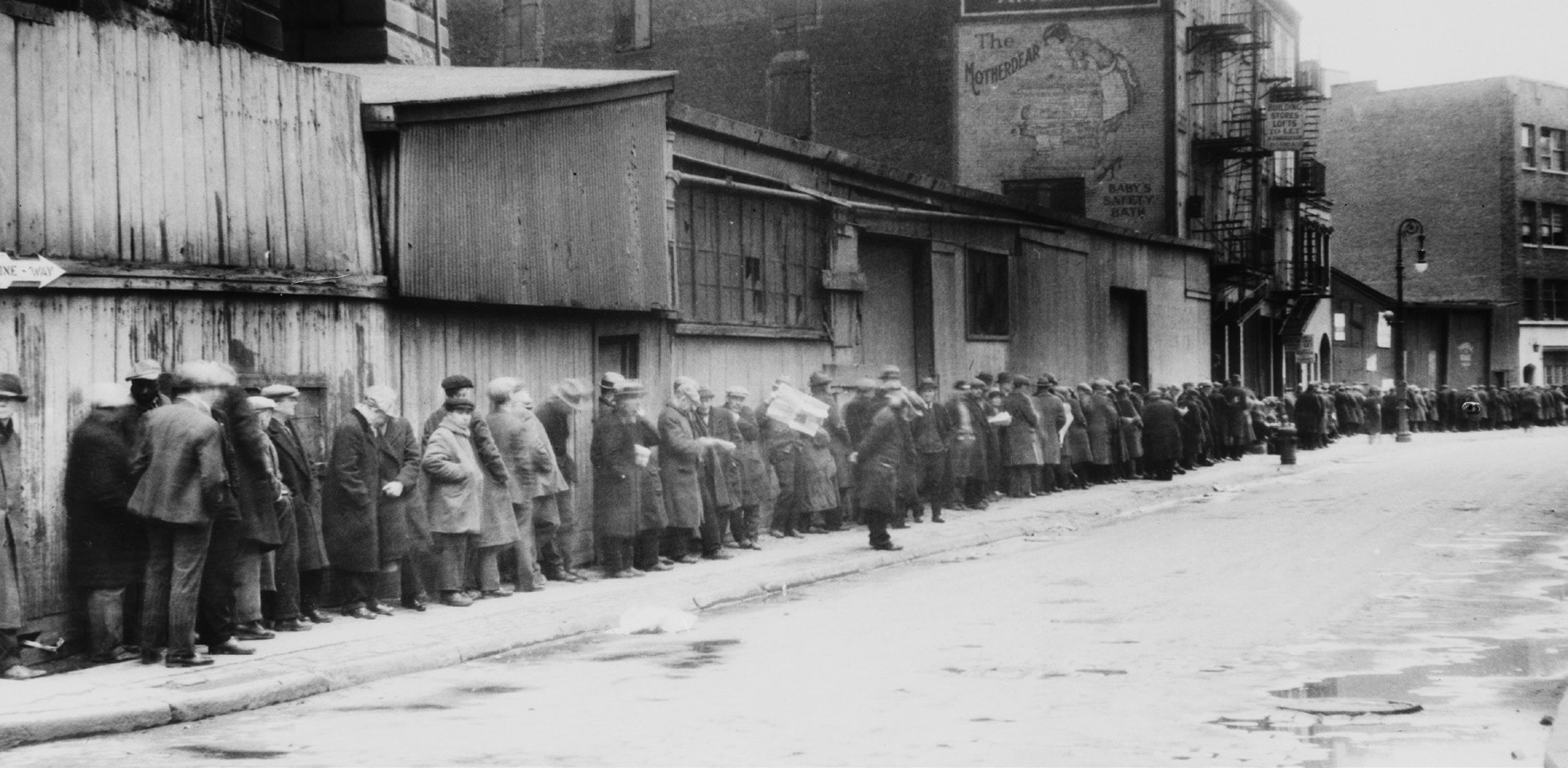
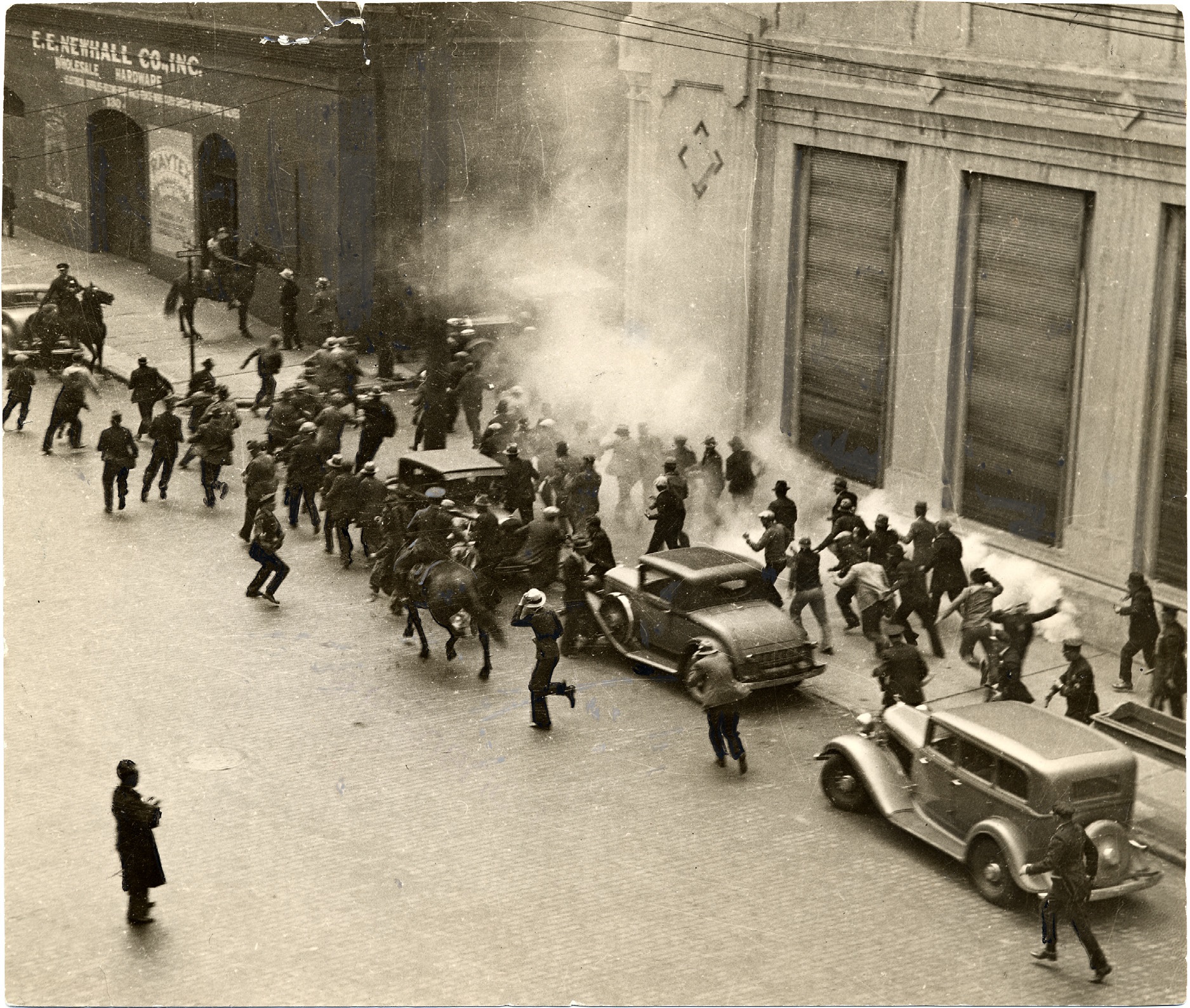
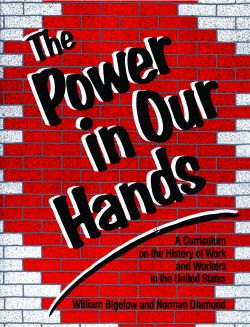
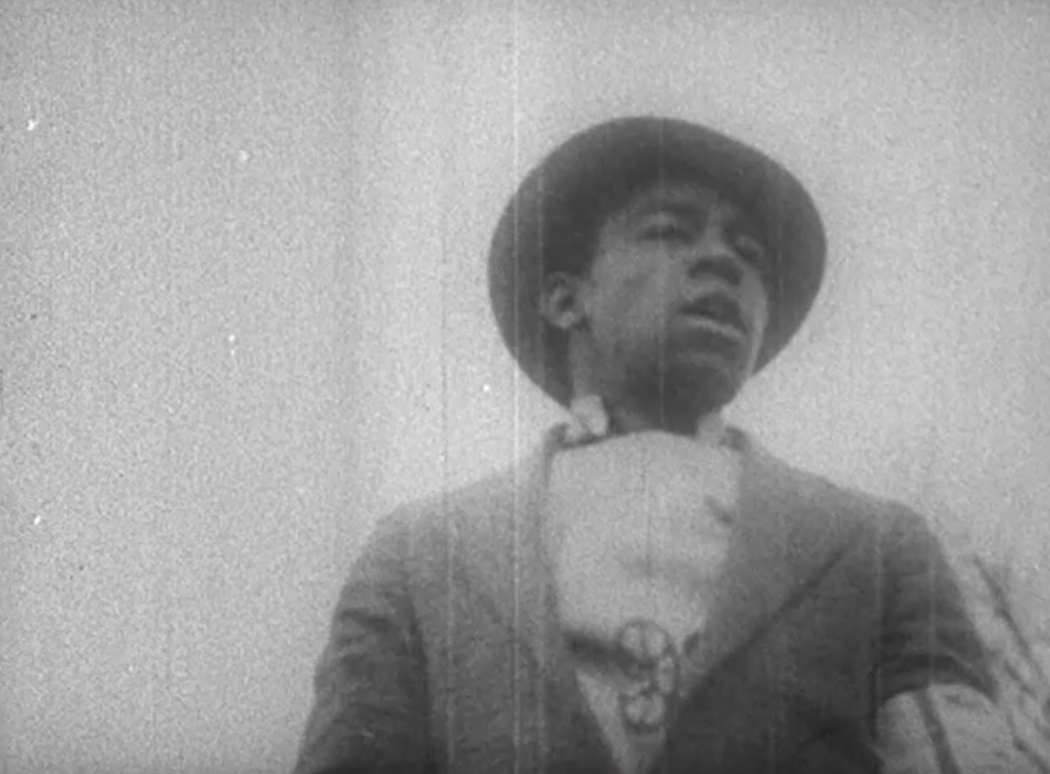
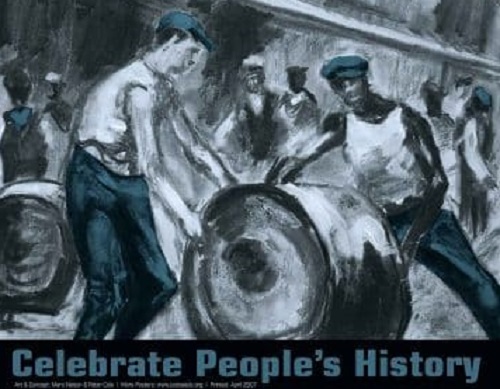
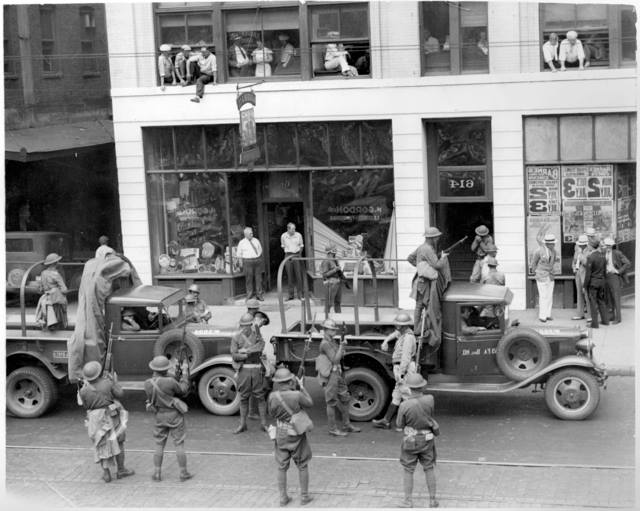
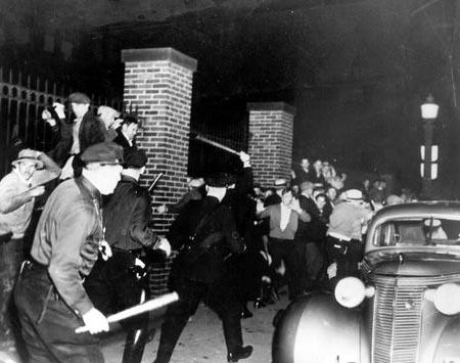
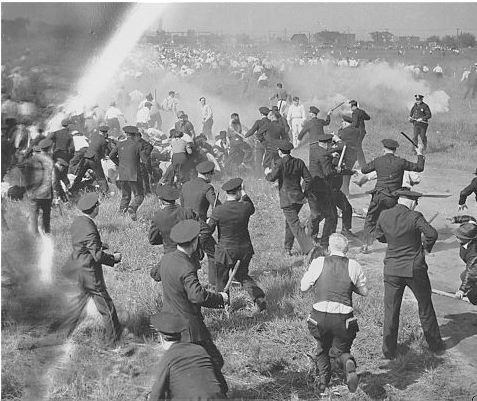





Twitter
Google plus
LinkedIn